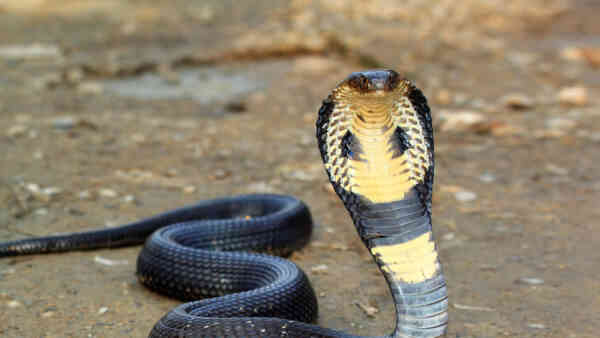Snakes cause panic in many people, in some cases, by the way, quite justified — the bite of many of them is able to send an adult to the next world very quickly. But nevertheless, there are enough lovers of these reptiles in the world who do not have a soul in them, and keep them as pets.
Interesting facts about snakes
- Snakes found in all corners of the globe except Antarctica. In addition, there are no reptiles of this order in Ireland, Iceland and New Zealand (interesting facts about Antarctica).
- Poisonous snakes use poison primarily as a way to kill the victim during the hunt, and not for self-defense.
- The longest snake inhabiting the Earth is the reticulated python, whose body length can reach 10 meters.
- The largest and most massive snake on the planet is the anaconda, or water boa. There are many testimonies of anacondas over 6 meters long, but none of them have been scientifically confirmed. But the record weight of anacondas is well known – adult snakes weigh from 30 to 70 kg. Among scaly anacondas, it is second in weight only to the Komodo monitor lizard; among snakes, it has no equal.
- The shortest snakes on Earth live on the island of Barbados – adults grow up to a maximum of 10 centimeters. On average, the size of land snakes rarely exceeds 1 meter (interesting facts about Barbados).
- Finds made by scientists suggest the existence of snakes on Earth already about 167 million years ago.
- Snakes do not have legs, shoulders, chest, eardrum, lymph nodes, bladder and eyelids to close and open.
- Serpentine eyelids — these are transparent scales that are always closed to keep dirt out of the eyes. At the same time, in fact, the eyes of the snakes never close and they sleep with their eyes open, if they do not cover them with the rings of the snake body.
- The upper and lower jaws of the snakes are not connected to each other so that the snakes can open their mouths very wide and swallow prey
- Due to their ability to periodically change old skin to new, snakes have become a symbol of medicine and getting rid of diseases.
- The teeth of vipers, due to the special structure of the jaws, can rotate 90 degrees.
- Poisonous teeth of a number of snakes, for example , the Gaboon viper, can grow up to 4.5 cm.
- In a snake body, from 200 to 450 vertebrae (in humans, for comparison, 33-34 vertebrae).
- Internal organs of snakes — elongated, and when they are located, the symmetry inherent in other species is not observed. In addition, paired organs usually lose their pairs – for example, most snakes have only the right lung.
- Snakes search for prey and navigate in space by the smell that they catch with the help of the tongue – the tongue constantly collects particles of soil, air and water, which the snake then analyzes in its mouth.
- Some snakes have excellent eyesight, others can only distinguish light from darkness. Basically, snake vision does not serve to look at the surroundings, but to determine the movement of objects of interest to the snake (interesting facts about vision).
- Thanks to a special organ, snakes “see” heat, which allows them to quickly go on the trail of warm-blooded prey. Snakes also recognize infrared radiation due to the heat emanating from it.
- Snakes feel the approach of other animals to them, catching the vibrations of the earth with the entire surface of the body.
- All snakes known to science (and there are 3631 of them on the planet species) are predators.
- In 1987, the remains of a 3.5-meter fossil snake were found, which made it possible to prove that about 67 million years ago, snakes ate dinosaur eggs and cubs.
